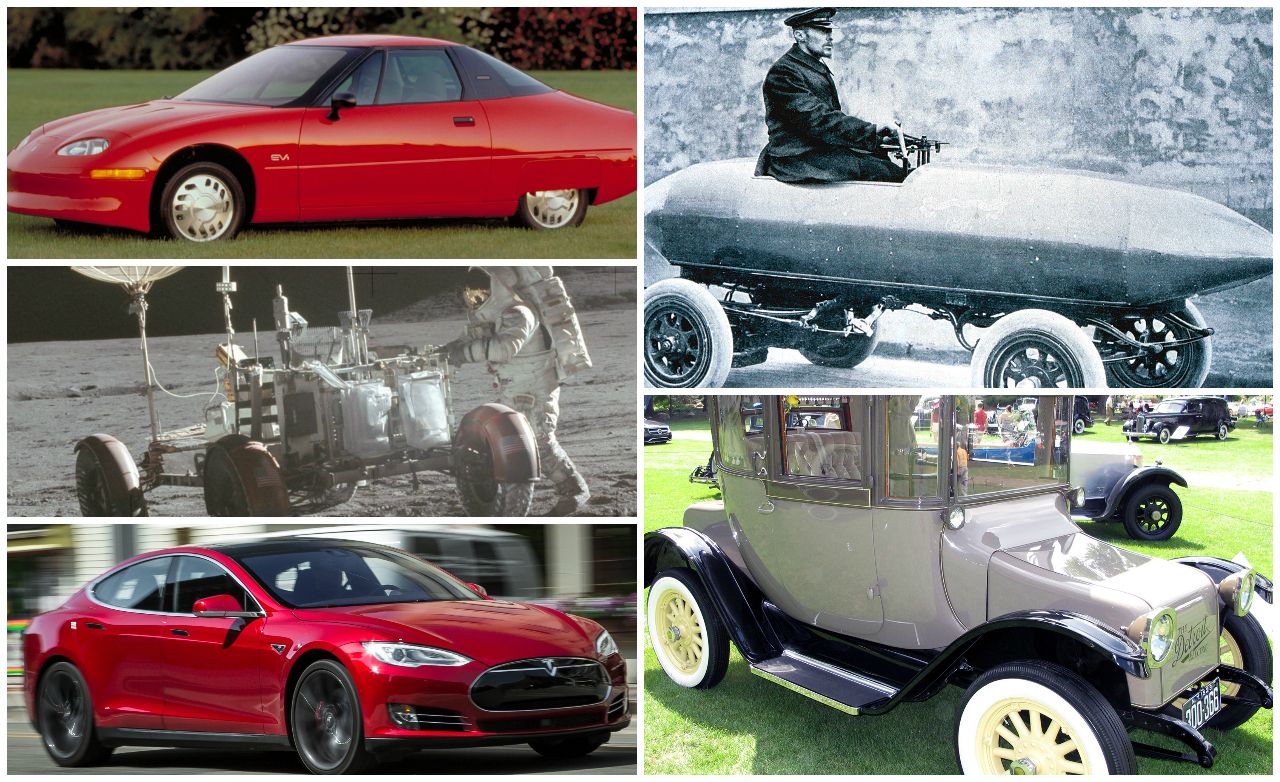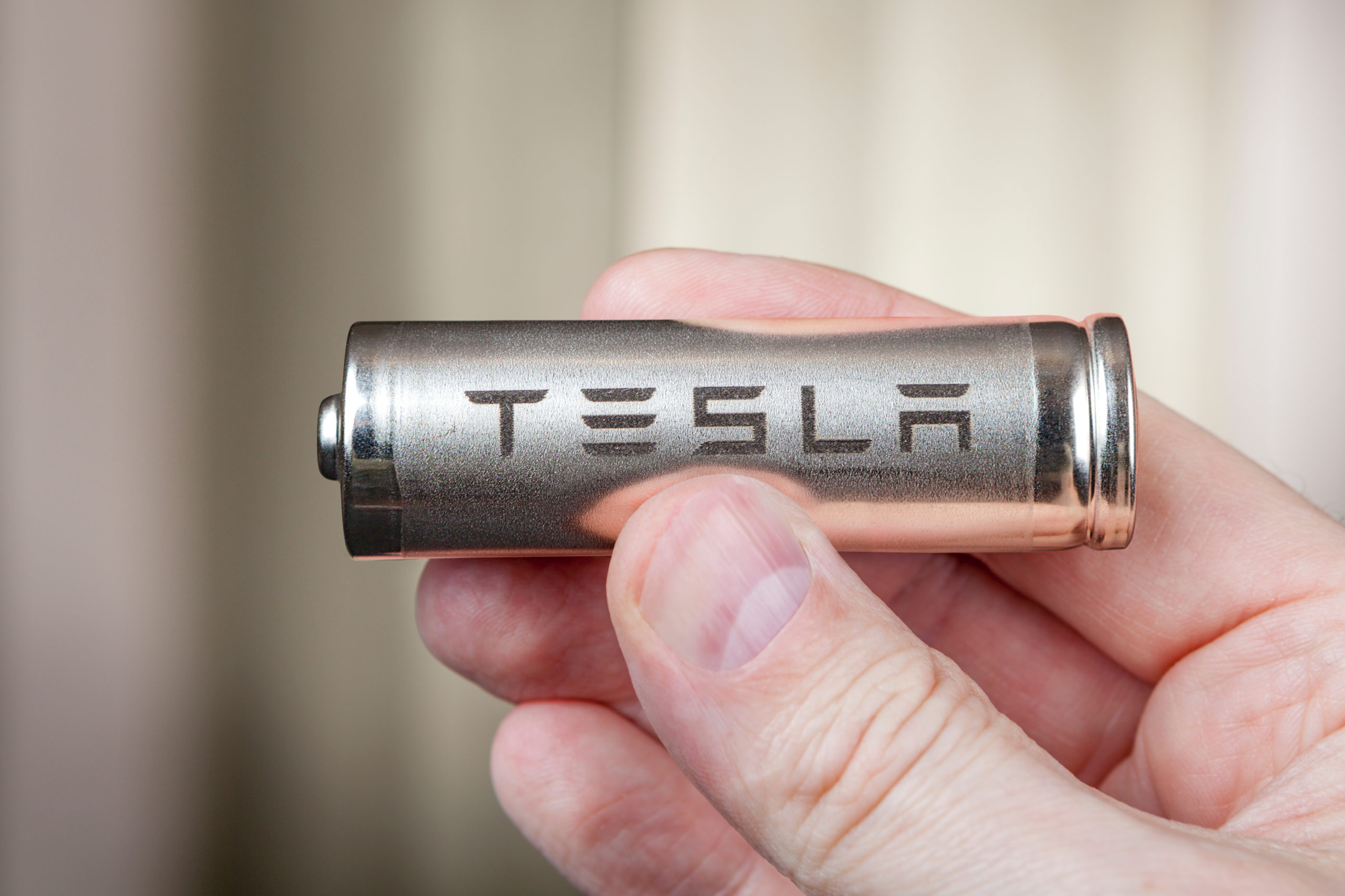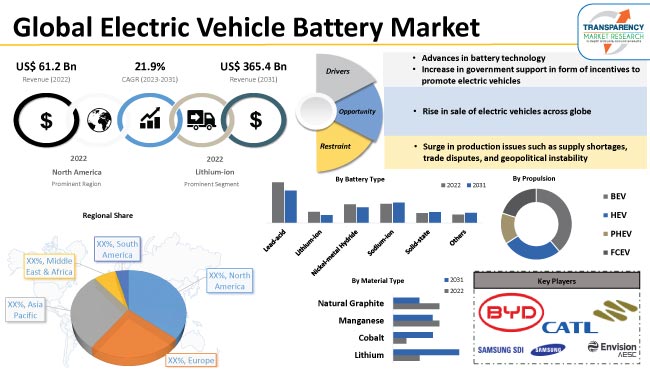For many, the whisper-quiet hum of the electric car lying in stark contrast to the deep growl of their fuel-consuming predecessors is a sign of the times. Welcome to the realm of the electric vehicle (EV) battery, the nucleus of a revolution redefining the auto industry. This electrifying leap forward didn’t occur overnight, but rather, has been an impressive journey of technological advancement and innovative prowess. Strap in as we journey under the hood, delving into the evolution of EV batteries, from their humble beginnings to today’s aptitude to power us into a cleaner, greener future.
Early Beginnings of Electric Vehicle Batteries

It’s quite the spectacle to recount that the genesis of electric vehicle batteries predates Karl Benz’s gas-guzzling, noisy, and smokey motorwagen or Henry Ford’s Model T. In the nascent days of motorized transport — we’re looking at the first half of the 19th century — it was electricity, not internal combustion, that appeared predestined to be the motive power of choice.
The journey began with pioneering innovators, such as Hungarian inventor Ányos Jedlik, who designed a small car powered by his new motor. He made use of galvanic cells (early batteries) to store energy. This invention arrived in 1828, decades before Carl Benz built his first patented motorcar in 1886.
Then in 1859, French physicist Gaston Planté handed the world the first rechargeable lead-acid battery, offering a beacon of potential for electric vehicles (EVs). While the weight and low energy density were impediments, the ability to recharge these storage units marked a significant stride forward for EVs.
Fast forward to the 1880s, Thomas Edison, the renowned inventor himself, entered the fray. Spurred on by the limitations of the lead-acid technology, Edison relentlessly pursued the development of a lighter, more durable battery. His determination primarily bore the Nickel-Iron battery. Despite the great expectation and unrelenting hype, his design was not significantly better than Planté’s. Though it had longer life, it suffered from lower efficiency and higher cost.
Although internal combustion engine cars originally suffered from start-up crank problems and a clamorously noisy operation, their longer range and speedy refuel ultimately tipped the scales in their favor. Consequently, EVs powered by early battery types, which once ruled the roost, were subdued and relegated to the fringes of the transportation landscape.
Thus, the dawn of electric vehicle batteries was a period filled with relentless experimentation and innovative leaps, with each significant invention contributing to the rich tapestry of the evolution of EV batteries. It set the stage for the electrified, cleaner, and sustainable mobility solution that we envision today.
Progression & Developments in the 20th Century

As we journey into the 20th century, we see a dramatic shift in the landscape of electric vehicle batteries, fueled by advancements in technology and infrastructure, societal needs, and the urgency for sustainable energy sources.
At the beginning of the 20th century, the automobile industry was primarily fueled by coal and oil. However, as the consequences of heavy dependence on fossil fuel emerged, the need for clean, alternative energy sources became apparent. This jolted interests and investments in the electric vehicle and, consequently, its power source: the battery.
It’s interesting to note the prevalence of Lead-acid batteries. They ruled the roost in the early 1900s due to their cost-effectiveness and the absence of significant alternatives. The Lead-acid battery, which was first introduced in the mid-19th century, received considerable structural enhancements and improvements in its durability and life cycle in the 20th century. Despite this, the battery was still hampered by weight limitations, modest energy storage, and slow recharge rates—issues which persist even today.
Mid-century brought the emergence of Nickel Cadmium (NiCd) batteries, poised to dethrone lead-acid batteries in electric vehicles. NiCd batteries boasted greater energy density, lower self-discharge rates, and longer lifespans. Though they recorded numerous successes in portable devices and aerospace applications, their costly manufacturing process and the toxicity of cadmium limited their adoption in the electric vehicle industry.
Towards the end of the 20th century, the Nickel Metal Hydride (NiMH) battery drove onto the scene. NiMH batteries offered more substantial improvements in energy density and the use of less-toxic components than its NiCd counterpart. The Chevy EV1, launched in the 1990s, employed NiMH batteries and became an iconic symbol of early electric cars. However, NiMH batteries still struggled with limitations such as decreased performance in extreme temperatures and high production costs.
In essence, throughout the 20th century, researchers and manufacturers tirelessly explored the vast battery terrain, navigating challenges and roadblocks, while driven by the prospect of a breakthrough. The fruits of their labor and resilience would only be truly realized in the cusp of the 21st century, as we shall uncover in the next section.
Entrance of Lithium-ion Batteries and the Influence of Tesla

Once upon a time, the batteries running our eclectic collection of devices, including those nifty whispering-quiet cars, were limited in scope, with minimal energy density and plain laborious charging times. But then, like a king rushing in to save a damsel in tech-distress, the lithium-ion battery entered the scene.
The lithium-ion battery, available since the early 90s, was an attention-grabbing innovation with its big promises. This new breed of energy storage brought forth higher energy density, longer life cycles, and a defiance against the burdensome ‘memory effect’ that haunted older rechargeable batteries. They seemed like the perfect solution for electric vehicles (EVs), which required notable power to go different places, minus the constant pit stops for juice.
Now, we can’t chat about lithium-ion and EVs without tipping our hat to the game-changing role of Tesla. In fact, one could argue – and not unreasonably – that the rise of lithium-ion batteries in electric cars can largely be attributed to the audacious maneuvers of Elon Musk’s team. And boy, did they maneuver.
Tesla, with its Roadster initially and then the hot-selling Model S, introduced lithium-ion power to the highways and driveways, making electric cars not just environmentally friendly alternatives for the tree-huggers, but sleek, luxurious vehicles with impressive range and acceleration that made even the most fervent petrolheads raise an eyebrow.
So, what was the Tesla magic trick? They dared to dream. They banked on the energy density of lithium-ion batteries to build a car that promised and delivered 200-plus miles on a single charge. Tesla’s approach wasn’t simply integrating existing technology into an automotive framework but evolving and optimizing the lithium-ion battery itself. Such audacious engineering daring pushed the other players in the industry to step up their game. The Tesla effect, if you may.
Batteries transitioned from just another component to a powerful, essential driving force. Tesla also made another unique contribution by opening its patents in 2014. It started sharing its technology with the rest of the car industry, further feeding lithium-ion fever.
As the influence of Tesla continues to crackle through the EV sphere like electricity, more manufacturers are configuring lithium-ion cells to power their vehicles. Today, this battery tech remains the unrivaled champ in the electric circuit, still packing a punch in an ever-evolving field. Tesla didn’t just introduce a new power source; it spurred an energy revolution on four wheels. And for now, at least, lithium-ion battery remains the heart of this silent, clean motoring revolution.
So here we are, stuck in lithium-land – living the electric dream that was only an engineer’s farfetched fantasy just a few decades back. And while the story continues with unprecedented advancements and curiosity-enducing future predictions, one fact remains salient – the lithium-ion battery’s entrance, powered majorly by the unyielding audacity of Tesla, brought us into a new, electrifying era. An era led by high-performing battery packs under the hood, driving us silently into a cleaner, greener future. Now that’s what you call moving powerfully forward!
Advancements in the 21st Century and the Rise of Solid State Batteries

Navigating the twists and turns of the 21st century, one cannot overlook the seismic shift that’s taking place in the realm of electric vehicle batteries: the rise of solid-state batteries. It’s akin to moving from the analog rotary phone to a smartphone, a transformative leap that promises next-generation capabilities and performance standards.
Solid-state batteries take the fundamental aspects of traditional battery technology and give them a total overhaul. Battling with issues such as energy density, charging times, and safety, these frontliners of progress replace the liquid or gel form electrolyte found in traditional Lithium-ion batteries with a solid one. The boost in energy density is distinct with the replacement of a liquid electrolyte with a solid. This allows for approximately double the energy density – an equivalent of powering an EV for 500 miles on a single charge, a boost that’ll undoubtedly change the playfield for electric vehicles.
Moreover, solid-state batteries promise significantly shorter charging times – a bane in the life of EV users – cutting them from hours to minutes. They also score high on safety, a domain Tesla set the benchmark for, by drastically minimizing the risk of leaks and fires – issues often associated with liquid electrolytes.
Scientific advancements of the 21st century have brought us already to the brink of this impressive realization. Companies are racing to make this progressive technology a viable option in the market – from industry giants like Toyota and Ford to ambitious startups like QuantumScape, all gunning for that technological leap.
However cool it might sound, the implementation of solid-state batteries is challenging. The cost is a significant hurdle. Currently, its production is expensive, making the end product unreasonably pricey for mainstream consumers. The durability issue is another challenge. Solid-state batteries have yet to demonstrate they can endure the rigors of extended usage without substantial degradation.
Despite these roadblocks, there’s an admirable sense of optimism. The 21st century has been an era of rapid advancement and the concept of ‘impossible’ seems increasingly outdated. As we continue to drive full throttle into this electric future, this revolution in battery technology sits at the heart of our journey. With consistent advancements brought about by extensive research and growing investment, it won’t be long before the positives of solid-state batteries are not just features of high-end EVs, but accessible to every prospective electric vehicle owner on the planet.
Future Predictions for Electric Vehicle Batteries

The electric vehicle battery landscape is expected to significantly transform in the following decades. Innovation, driven by environmental considerations, energy efficiency, and the pursuit of electric range, is set to catapult chunks of change on this frontier.
A strong contender expected to revolutionize the EV battery market is solid-state technology. Still in its nascent stages, solid-state batteries promise to deliver greater energy density and quicker charging times than traditional lithium-ion batteries currently used. This is due to the replacement of flammable liquid electrolyte in lithium ion batteries with a safer solid material in solid-state batteries. Furthermore, these solid-state batteries have a much longer lifespan. Speculations are that carmakers that nail this technology first may have an edge over competitors, offering EVs with superior range and safety.
Another significant prediction for future EV batteries is the adaptation of lithium-sulfur technology. This type of battery boasts a higher energy density, five times that of Lithium-ion, meaning they could potentially offer far greater range. Challenges in terms of cycle life and slow discharge rates remain but research is focusing on overcoming these hurdles.
The bold quest for next-gen battery technology marches beyond solid-state and lithium-sulfur, dredging into the realm of mind-boggling but genuinely feasible prospects. For instance, there is research around the idea of wireless charging, in which EV batteries could be juiced up on the go through highways equipped with inductive charging systems. Also, the use of supercapacitors which can charge and discharge quickly could be paired with batteries to reduce wear and improve lifespan.
Moreover, the future of EV batteries will not only be shaped by these technological advancements but will also be influenced by increased collaborations to accelerate the development and scaling of these technologies. Partnerships that include carmakers, battery manufacturers, and even countries working towards shared goals of economies of scale and standardized technology are plausible strides the industry could take.
On the environmental front, recycling is set to play an increasing role in the battery ecosystem. Evolving methods to salvage and repurpose the valuable metals within spent lithium-ion batteries could not only make the battery production process less damaging to the environment but also lessen dependence on volatile raw material markets.
The path to the electric future is a gauntlet flung down by inventiveness and necessity. Whatever form EV batteries take in the years to come, it’s clear that the only direction for such innovation is forward.
FAQs
When did electric vehicle batteries actually come into existence?
In a plot twist worthy of M. Night Shyamalan’s best work, electric vehicle batteries were actually FOUNDED before gasoline engines around the mid-19th century. They just decided to take the scenic route, like maybe a couple of centuries scenic, to get into the mainstream. Talk about fashionably late!
What were the major developments in the mid-20th century?
The mid-20th century saw EV batteries getting a major makeover! Think of it like EV batteries dropped a few pounds, got a fancy haircut, and showed up at the prom. 1967 was the big year when the first ever nickel-cadmium battery rechargeable EV was produced, basically turning heads everywhere they went.
When did lithium-ion batteries come into the scene?
Lithium-ion batteries sauntered onto the scene in the 1990s, turning EVs into the sexy beasts we know them as today. They’re basically the Tom Cruise of the battery world, only without the Scientology and jumping on couches thing. Lithium-ion batteries gave EVs the power to run longer and recharge faster, making the idea of owning one, really quite electrifying!
What does the future hold for EV batteries?
Well, if we had a crystal ball, we’d probably be winning the lottery right now instead of guessing about EV batteries! But if current trends are anything to go by, think bigger, better, faster, and more efficient…kind of like if The Rock also happened to be a super-genius. Solid-state batteries are creating quite the buzz, promising more power, more range, and faster charging times. In short, EV batteries are just getting started, baby!
Conclusion
The dawn of electric vehicles witnessed clunky, inefficient batteries but current EVs boast impressive range and quick charging capabilities, showing how far we’ve traversed in battery technology. As we look toward a future where EVs rule the road, the potential for further advancements is simply electrifying. From improved energy density to faster charging, the evolution of EV batteries is nothing short of revolutionary – a testament to human ingenuity and our drive for a cleaner, more sustainable future. After all, it’s not just about getting from point A to point B; it’s about the journey and what fuels it.
